Prepare to be amazed by the fascinating world of science! From radioactive bananas to cube-shaped wombat poop, the natural world is filled with astonishing and unexpected facts that challenge our understanding of reality. In this list, we’ve gathered 40 incredible science facts that will surprise, entertain, and educate you. Whether you’re a science enthusiast or just curious, these intriguing tidbits will give you a fresh perspective on the wonders of our universe. Dive in and discover the mind-blowing truths that make our world so extraordinary!
1. Bananas Are Radioactive
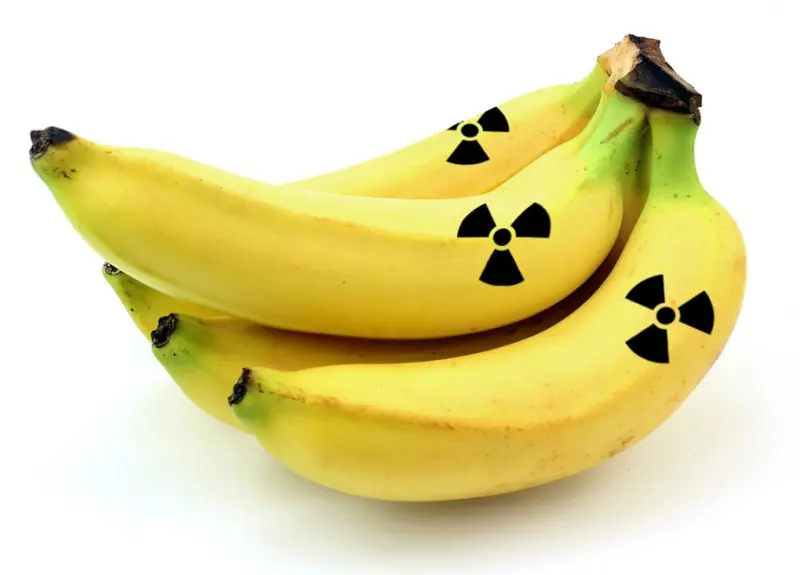
Bananas are known for being a great source of potassium, but did you know that they are also slightly radioactive? This is due to the presence of potassium-40, a naturally occurring isotope of potassium. Potassium-40 undergoes radioactive decay, emitting a small amount of radiation. However, the level of radiation is extremely low and not harmful to humans. In fact, many foods contain small amounts of naturally occurring radioactive isotopes.
The radioactivity in bananas is not enough to cause any health issues. To reach a dangerous level of radiation exposure, you would need to consume an impractically large number of bananas in a short period of time. This phenomenon, known as the “banana equivalent dose,” is often used to explain radiation exposure in more understandable terms. Essentially, while bananas are technically radioactive, the amount of radiation they emit is minuscule and poses no threat to your health.
2. Frogs Can’t Vomit
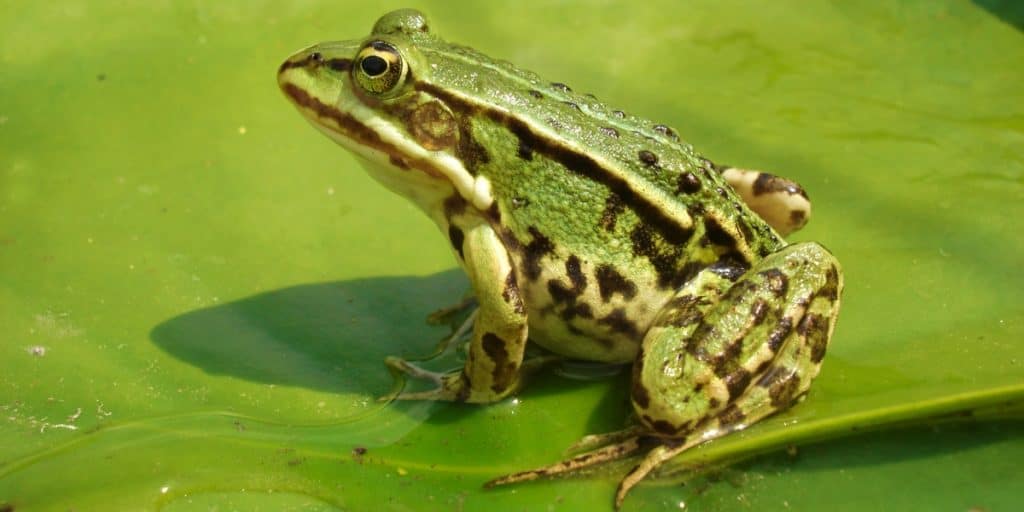
Frogs have a unique way of dealing with anything toxic or indigestible they might swallow. Instead of vomiting in the traditional sense, they eject their entire stomach out of their mouths. Once the stomach is outside the body, the frog uses its forearms to scrape out the contents. This process is known as eversion. After the stomach is emptied, it is pulled back into the body.
This extraordinary method of regurgitation is necessary because frogs lack the muscles required to perform the reverse peristalsis that humans use to vomit. The process of eversion is a rapid and effective way to expel harmful substances, ensuring the frog’s survival. Despite how unusual this may seem, it is an efficient adaptation that highlights the incredible diversity of biological mechanisms in the animal kingdom.
3. Chickens Have Eavesdropping Skills
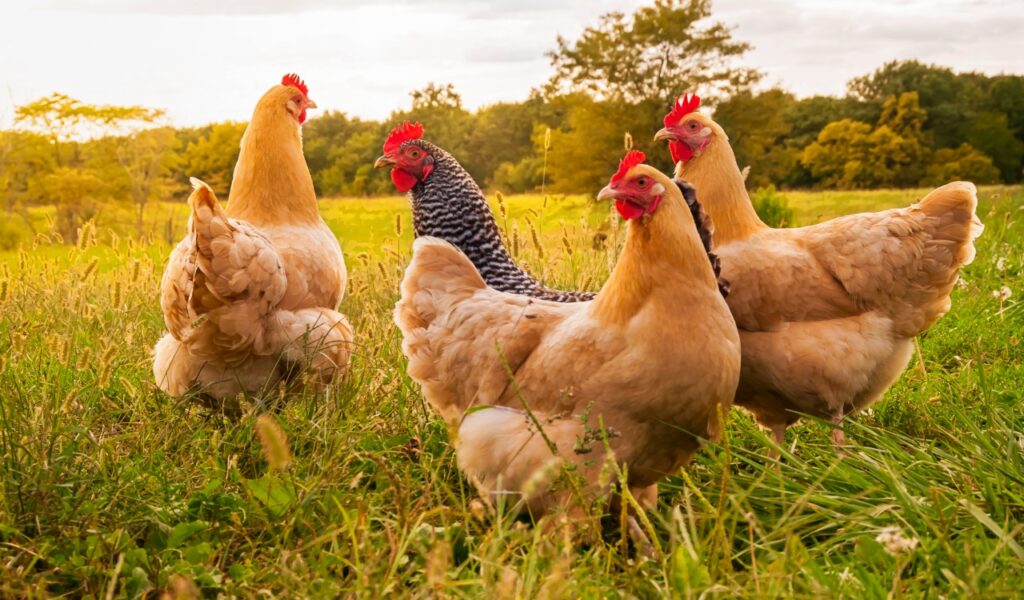
Chickens are much more communicative and socially complex than they might appear. They have around 30 different vocalizations used to communicate with each other, ranging from alarm calls to food calls. These vocalizations help chickens understand their environment and interact with their flock. For example, a specific type of cluck can alert others to the presence of food, while another can signal danger.
What’s even more fascinating is that chickens can also understand and respond to the vocalizations of other chickens, effectively eavesdropping on their peers. This ability to comprehend and react to different calls suggests a level of social intelligence that many people don’t associate with chickens. Studies have shown that chickens can also recognize and remember the faces of over 100 different individuals, both chickens and humans, further showcasing their cognitive abilities.
4. Bees Can Detect Explosives
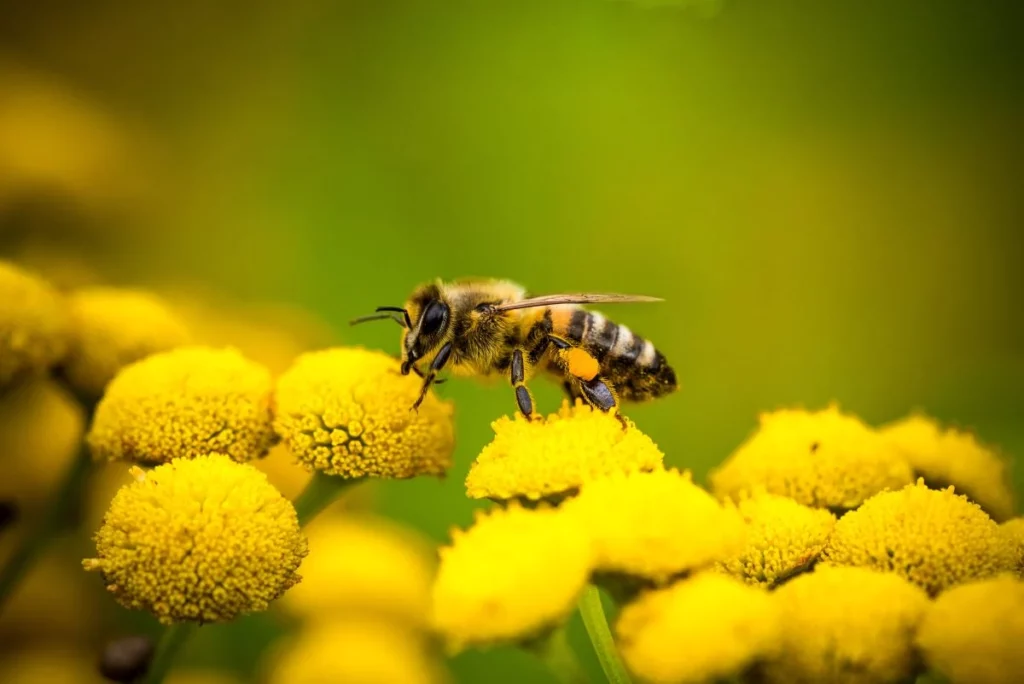
Bees are well-known for their exceptional sense of smell, which they use to locate flowers and communicate within their hive. This keen olfactory sense can also be harnessed for more unusual purposes, such as detecting explosives. Bees can be trained to associate the scent of explosives with a food reward, similar to how dogs are trained. When bees encounter the scent they have been trained to recognize, they exhibit specific behaviors that can be observed by researchers or handlers.
This remarkable ability is due to the bees’ highly sensitive antennae, which can detect chemical traces in the air at very low concentrations. Using bees for explosive detection is an innovative approach that has been explored in various security and military applications. The training process is relatively quick, and bees can cover large areas, making them an efficient tool for detecting hidden explosives.
5. Water Can Boil and Freeze at the Same Time

Water can exhibit some truly mind-bending behaviors under the right conditions, one of which is boiling and freezing at the same time. This phenomenon occurs at the “triple point,” where the temperature and pressure are such that water can exist simultaneously as a gas, liquid, and solid. For pure water, this point is at a temperature of 0.01 degrees Celsius and a pressure of 611.657 pascals.
At the triple point, water molecules have enough energy to exist in all three states at once. This balance is delicate and requires very precise conditions. The triple point is not just a theoretical concept but an important standard used in thermodynamics and calibration of thermometers. It illustrates the fascinating complexity of water’s physical properties and the underlying principles of phase transitions.
6. Astronauts Can’t Cry in Space
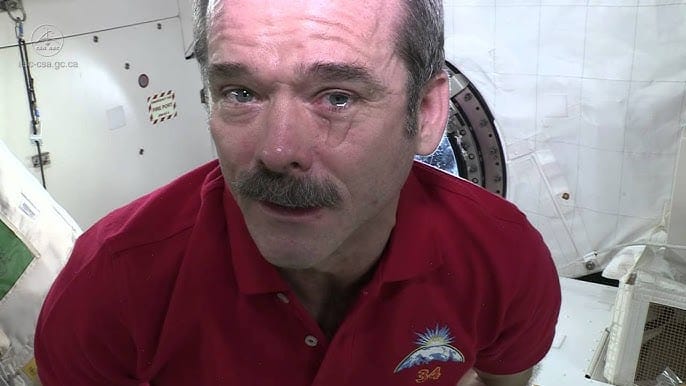
Crying in space is a different experience compared to Earth. Due to the lack of gravity, tears do not fall down the face. Instead, they form a ball of liquid around the eyes. This can be quite uncomfortable for astronauts, as the tears can stick to the eyes and create a stinging sensation. This happens because, in microgravity, the surface tension of the tears causes them to clump together rather than flow downward.
Astronauts often have to use towels or other absorbent materials to remove the tears. This phenomenon highlights one of the many unique challenges faced in a microgravity environment. The absence of gravity affects many bodily functions, and crying is just one example. Understanding these effects is crucial for the well-being of astronauts and for planning long-term space missions.
7. Humans Share 60% of Their DNA with Bananas
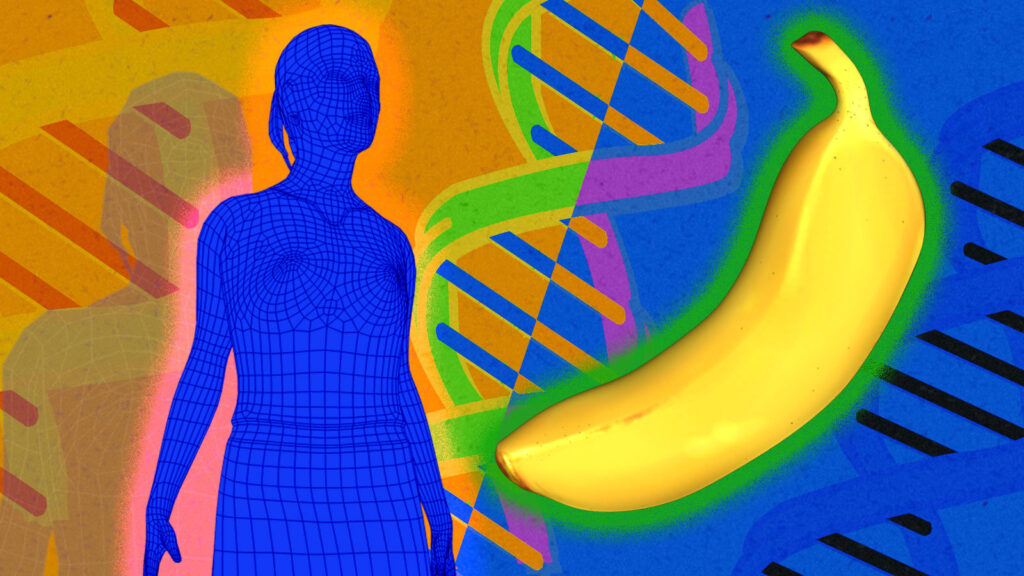
It might seem surprising, but humans share about 60% of their DNA with bananas. This fact underscores the fundamental similarities between all living organisms. DNA, or deoxyribonucleic acid, is the molecule that contains the genetic instructions for the development, functioning, growth, and reproduction of all known living organisms. Despite the vast differences between humans and bananas, both organisms share many basic biological processes.
The shared DNA includes genes that are responsible for essential cellular functions such as respiration and metabolism. This commonality reflects our shared evolutionary history and the fact that all life on Earth descended from a common ancestor. While 60% may sound high, it’s important to note that this percentage represents basic cellular functions that are conserved across many forms of life, rather than traits that make us human.
8. An Octopus Has Three Hearts

Octopuses are fascinating creatures with a number of unique anatomical features, one of which is having three hearts. Two of the hearts are branchial hearts, which pump blood through the gills where it is oxygenated. The third heart, known as the systemic heart, then pumps the oxygenated blood to the rest of the body. This arrangement ensures that the octopus’s tissues receive a steady supply of oxygen, which is especially important given their active and predatory lifestyle.
The reason for this adaptation lies in the octopus’s complex and highly efficient circulatory system. Unlike humans, octopuses have blue blood, which is due to the presence of a copper-based molecule called hemocyanin that binds oxygen. This is more efficient than hemoglobin (found in humans) at transporting oxygen in cold and low-oxygen environments, such as the deep sea where many octopuses live.
9. Venus Is the Only Planet to Spin Clockwise

In our Solar System, most planets rotate counterclockwise on their axes. However, Venus is an exception as it spins clockwise, a motion known as retrograde rotation. This unusual rotation is believed to be the result of a massive collision with another celestial body in the distant past, which altered its original spin direction. Alternatively, it could have been caused by the gravitational influences of the Sun and other planets.
Venus’s retrograde rotation means that if you could stand on its surface (which is impossible due to its extreme temperatures and pressures), you would see the Sun rise in the west and set in the east. This distinctive rotation also affects the planet’s atmospheric dynamics and contributes to the extreme weather patterns observed on Venus. Understanding these phenomena provides valuable insights into the complex interactions that shape planetary systems.
10. There’s a Volcano on Mars 3 Times the Size of Everest

Olympus Mons on Mars is the tallest volcano and the largest shield volcano in our Solar System. Standing at approximately 13.6 miles (22 kilometers) high, it is nearly three times the height of Mount Everest, Earth’s tallest mountain above sea level. Olympus Mons spans about 370 miles (600 kilometers) in diameter, making it comparable in size to the state of Arizona.
The massive size of Olympus Mons is attributed to Mars’s lower gravity, which allows geological structures to grow larger than they can on Earth. Additionally, Mars lacks plate tectonics, meaning that volcanic activity is concentrated in one spot for millions of years, allowing for the continuous buildup of lava layers. This makes Olympus Mons a striking example of the volcanic processes that have shaped Mars’s surface over billions of years.
11. A Day on Venus Is Longer Than a Year on Venus
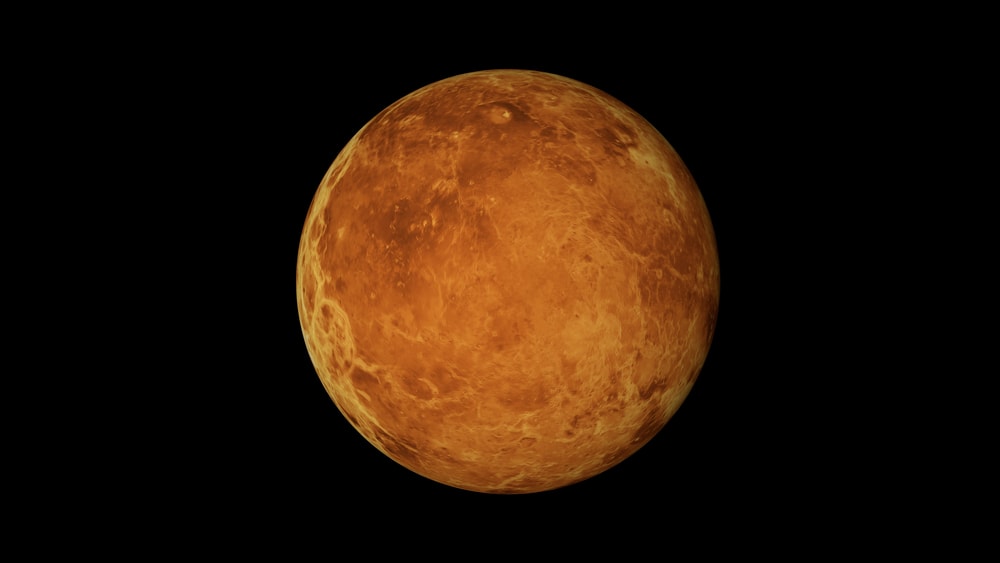
Venus has a peculiar rotational period that makes a single day (one complete rotation on its axis) longer than a Venusian year (one complete orbit around the Sun). It takes Venus about 243 Earth days to complete one rotation, whereas it takes only about 225 Earth days to orbit the Sun. This slow rotation is another result of the planet’s complex and tumultuous history, possibly involving massive impacts or gravitational interactions with other bodies.
Because of its slow rotation and thick atmosphere, Venus experiences extreme temperatures and weather patterns. Its surface temperatures can reach up to 900 degrees Fahrenheit (475 degrees Celsius), making it the hottest planet in our Solar System. The combination of a slow rotation and intense heat creates a hostile environment, emphasizing the dramatic differences between Venus and Earth.
12. Honey Never Spoils
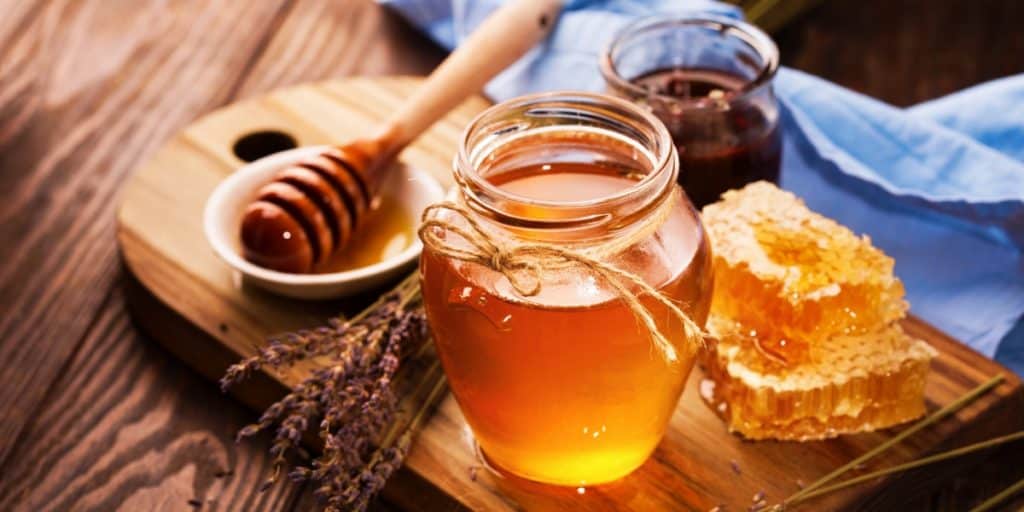
Honey has been found in ancient Egyptian tombs, still perfectly preserved after thousands of years. This long shelf life is due to several factors. Firstly, honey has a very low water content, which inhibits the growth of bacteria and microorganisms. Secondly, honey is highly acidic, with a pH between 3 and 4.5, which also prevents bacteria from surviving.
Additionally, honey contains natural preservatives such as hydrogen peroxide, which further inhibits the growth of microbes. The combination of these properties makes honey an exceptionally stable food product. However, while honey doesn’t spoil, it can crystallize over time. This process is natural and doesn’t affect the honey’s quality or safety. Crystallized honey can be returned to its liquid state by gently heating it.
13. Humans and Giraffes Have the Same Number of Neck Vertebrae

Despite the vast difference in neck length, both humans and giraffes have seven cervical vertebrae. In humans, these vertebrae are relatively small, but in giraffes, they are greatly elongated, each one measuring up to 10 inches (25 centimeters) in length. This anatomical feature allows giraffes to reach high into trees to feed on leaves and twigs.
The reason for this similarity lies in the shared evolutionary ancestry of mammals. Most mammals, regardless of neck length, have seven cervical vertebrae, suggesting that this trait was established early in mammalian evolution. The elongation of the vertebrae in giraffes is a specialized adaptation that enables them to thrive in their unique ecological niche.
14. A Blue Whale’s Heart Is the Size of a Small Car
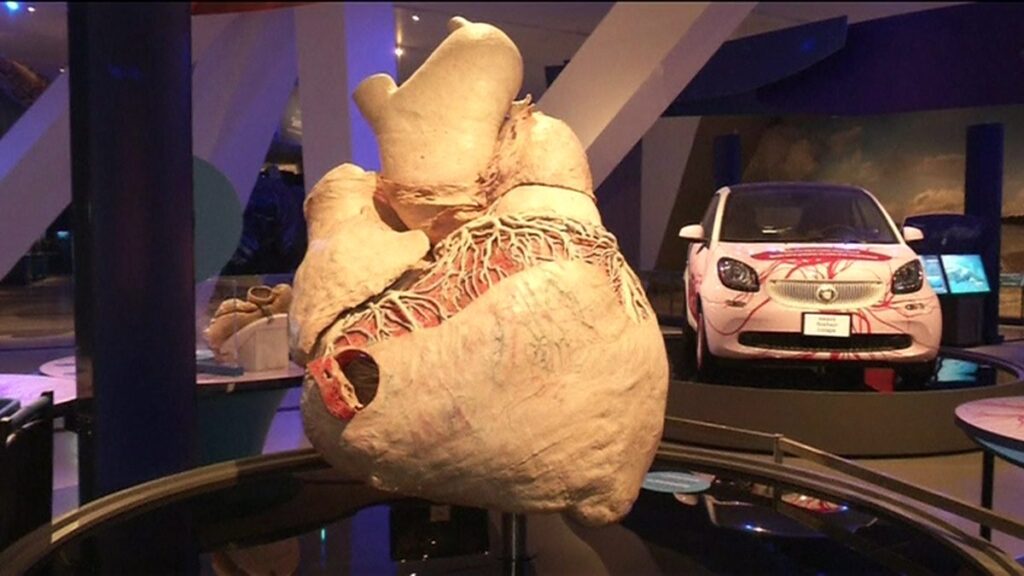
The blue whale, the largest animal on Earth, has a heart that can weigh as much as 1,300 pounds (590 kilograms) and is about the size of a small car. This massive heart pumps an astonishing amount of blood throughout the whale’s enormous body, maintaining the circulation necessary to support its vital functions. The aorta, the main artery leaving the heart, is so large that an adult human could theoretically crawl through it.
The sheer size and efficiency of the blue whale’s heart are necessary to sustain its massive body and enable it to dive to great depths in search of food. Blue whales primarily feed on tiny shrimp-like animals called krill, consuming up to 4 tons of them each day. The heart’s powerful beats are even audible from two miles away underwater, a testament to its extraordinary capabilities.
15. You Can Hear a Blue Whale’s Heartbeat from 2 Miles Away
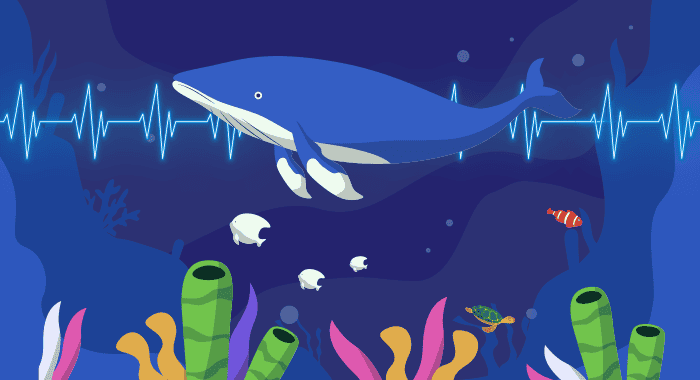
The blue whale’s heart is not only immense but also incredibly powerful, generating sound waves that can travel for miles. Underwater, sound waves travel faster and farther than they do in the air, allowing the blue whale’s heartbeat to be heard up to two miles away. This phenomenon is a result of the heart’s large size and the immense force with which it pumps blood through the whale’s body.
Listening to the heartbeat of a blue whale offers scientists valuable insights into the biology and health of these majestic creatures. Researchers use specialized underwater microphones, called hydrophones, to detect and study these sounds. Understanding the blue whale’s physiology and behavior is crucial for conservation efforts, as these animals are still considered endangered due to past whaling activities and current threats like ship strikes and entanglement in fishing gear.
16. Wombat Poop Is Cube-Shaped

Wombats, native to Australia, have a unique way of marking their territory: their feces are cube-shaped. This unusual shape prevents the poop from rolling away, helping wombats to communicate their presence through scent marking. The cube shape is produced in the last sections of the intestines, where the walls of the intestines have varying elasticity and stiffness, shaping the poop into cubes.
Researchers believe this adaptation has evolved to help wombats navigate their environment and establish their territory. By leaving their cube-shaped droppings on elevated surfaces like rocks and logs, wombats ensure that their scent marks remain in place and are more likely to be noticed by other wombats. This behavior is a fascinating example of how animals have evolved unique strategies to survive and thrive in their habitats.
17. A Group of Flamingos Is Called a ‘Flamboyance’
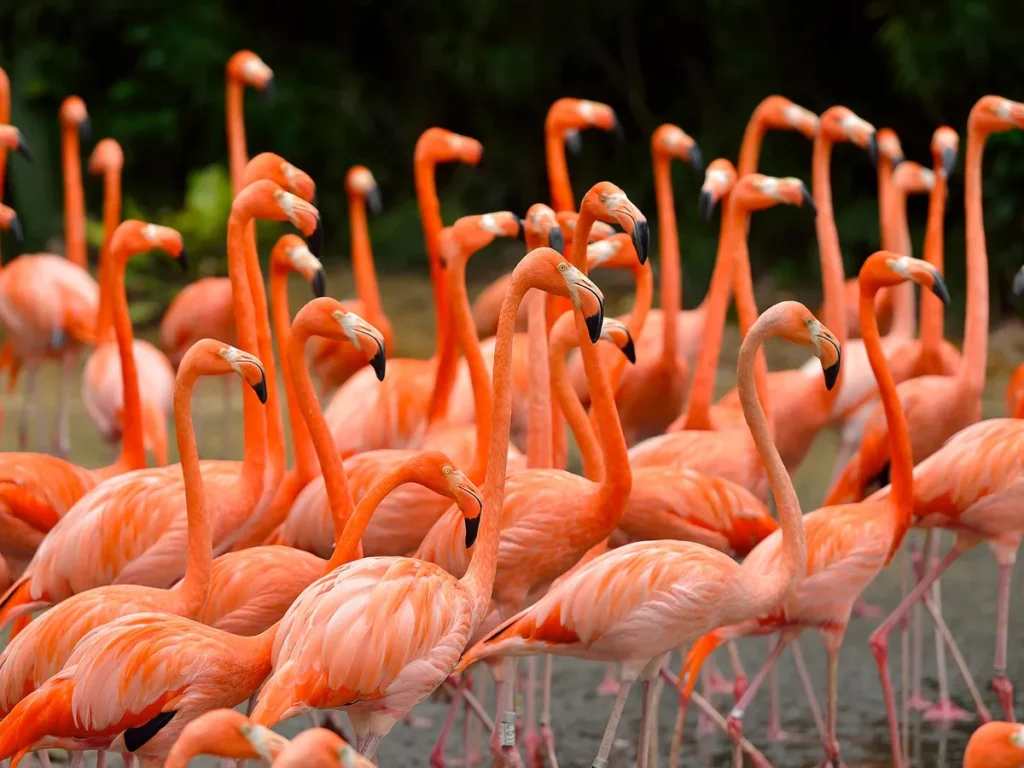
Flamingos, with their striking pink feathers and elegant postures, gather in groups known as a “flamboyance.” This fitting term reflects their vibrant and showy appearance. Flamingos get their pink color from the carotenoid pigments in their diet, which consists mainly of algae and crustaceans. The more carotenoids they consume, the brighter their plumage becomes.
Flamingos are social birds and live in large colonies, which provide several benefits, including protection from predators and increased foraging efficiency. These colonies can consist of thousands of individuals, creating a spectacular sight. The social structure of flamingos is complex, involving synchronized activities such as feeding and mating displays, which help maintain group cohesion and facilitate communication.
18. Butterflies Taste with Their Feet
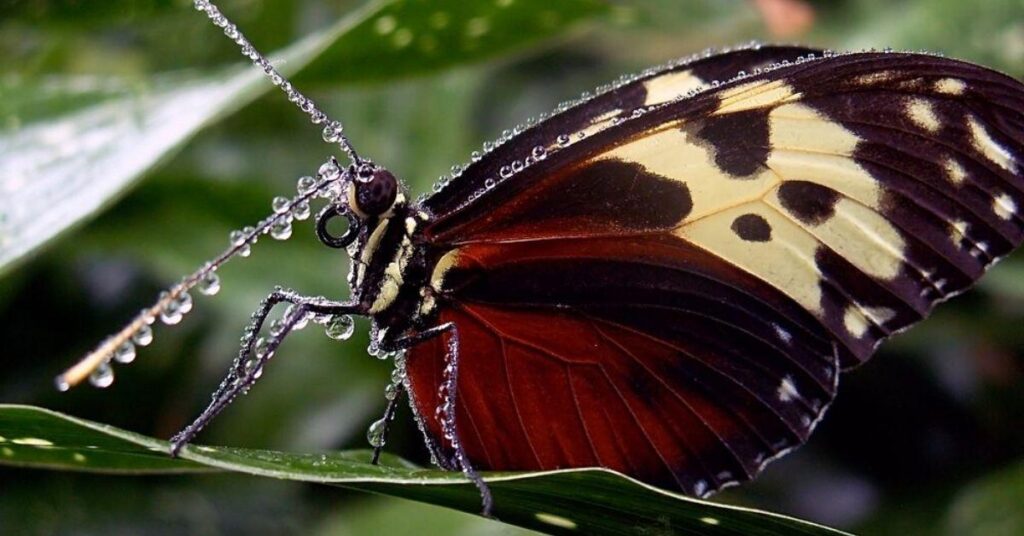
Butterflies have taste sensors on their feet, allowing them to taste the leaves they land on. This ability helps them determine whether a plant is suitable for laying their eggs. Female butterflies are particularly discerning, as they need to ensure that their larvae will have the right kind of food to eat when they hatch.
This adaptation is crucial for the survival of butterfly species. By tasting the leaves with their feet, butterflies can quickly and efficiently assess the quality of potential host plants. This behavior also highlights the intricate relationships between insects and plants, with butterflies playing a vital role in pollination and the maintenance of healthy ecosystems.
19. There Are More Stars in the Universe Than Grains of Sand on Earth
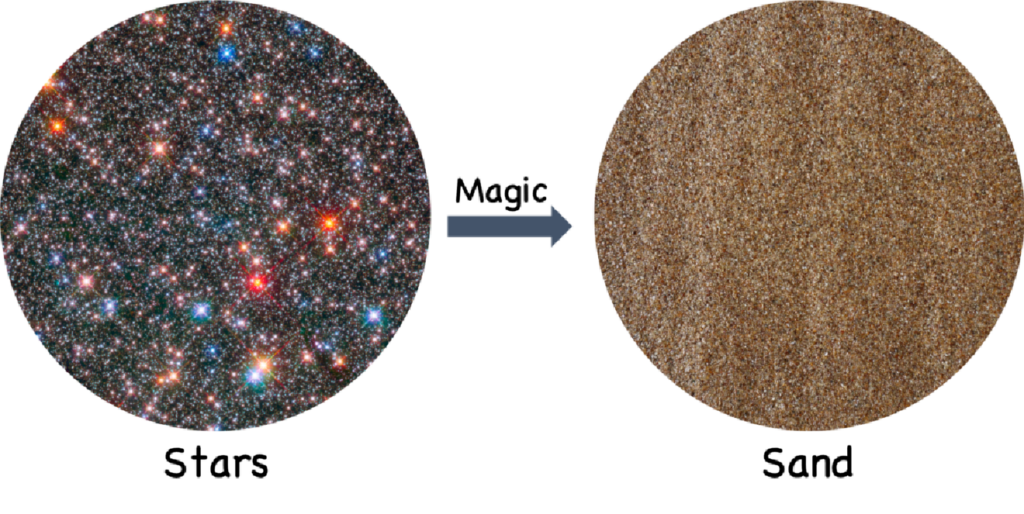
The universe is vast beyond our comprehension, containing an estimated 100 billion galaxies, each with millions to billions of stars. This staggering number of stars far exceeds the number of grains of sand on all the beaches and deserts on Earth. The observable universe alone is thought to contain around 1 septillion (1 followed by 24 zeros) stars.
This immense number underscores the scale and complexity of the cosmos. Each star represents a potential solar system, possibly with planets and moons, some of which might harbor life. The study of the universe and its countless stars continues to reveal new insights about the origins and nature of everything we see around us, fueling our curiosity and drive for exploration.
20. Cows Have Best Friends and Get Stressed When They’re Apart

Cows are social animals and form close bonds with specific individuals within their herd. These bonds can be so strong that cows show signs of stress when separated from their best friends. Studies have shown that cows have preferred partners and engage in activities like grooming and resting together.
This social behavior highlights the emotional complexity of cows and the importance of social interactions for their well-being. Understanding these dynamics can improve animal husbandry practices, ensuring that cows are kept in environments that support their social needs. Providing opportunities for cows to form and maintain bonds can lead to happier and healthier animals.
21. Sloths Can Hold Their Breath Longer Than Dolphins

Sloths have the remarkable ability to hold their breath for up to 40 minutes, surpassing dolphins, which need to surface for air every 10 minutes or so. This ability is a result of the sloth’s low metabolic rate, which allows them to conserve oxygen and stay underwater for extended periods.
Sloths often swim to move between trees or to escape predators. Their slow movements and low energy expenditure are adaptations to their arboreal lifestyle, where they feed primarily on leaves that are low in nutrients. These adaptations highlight the diverse strategies animals use to survive in their environments.
22. Jellyfish Are 95% Water
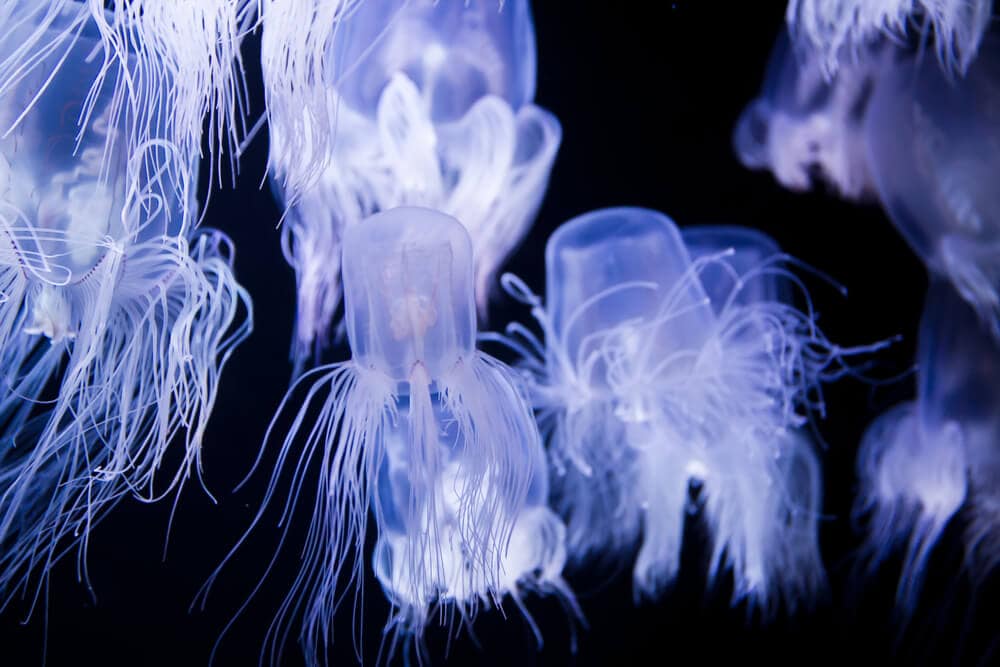
Jellyfish are simple yet fascinating creatures, composed mostly of water. About 95% of a jellyfish’s body is water, giving them their gelatinous and transparent appearance. This high water content makes them buoyant and allows them to float effortlessly in the ocean.
Jellyfish lack complex organs like a brain or heart. Instead, they have a simple nerve net that helps them respond to environmental stimuli. Despite their simplicity, jellyfish are effective predators, using their tentacles to capture prey. Their unique physiology and survival strategies make them an intriguing subject of study in marine biology.
23. There Are More Trees on Earth Than Stars in the Milky Way

Earth is home to an estimated 3 trillion trees, vastly outnumbering the approximately 100 billion stars in the Milky Way galaxy. This abundance of trees plays a crucial role in supporting life on our planet by producing oxygen, storing carbon, and providing habitats for countless species.
Trees are integral to Earth’s ecosystems, contributing to biodiversity and climate regulation. The vast number of trees also highlights the importance of conservation efforts to protect forests and ensure the health of our planet. Each tree is a part of a complex web of life that sustains the natural world.
24. A Day on Mercury Lasts About 1,408 Hours
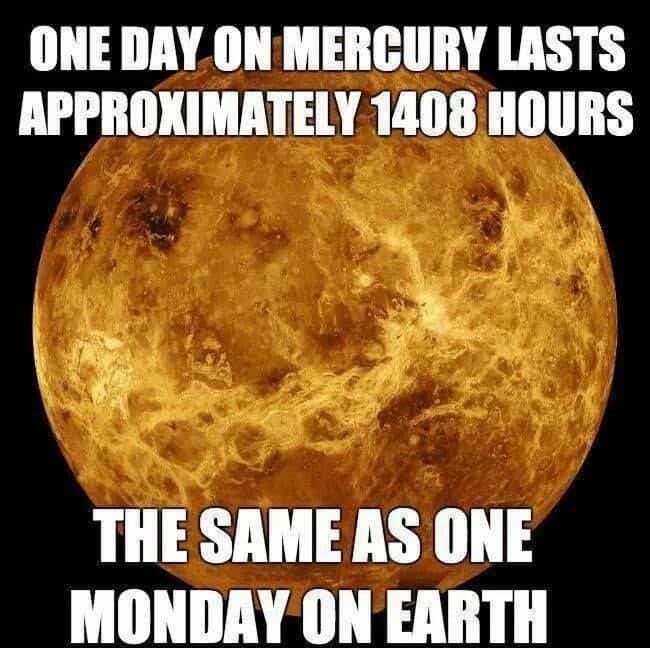
Mercury, the closest planet to the Sun, has a very slow rotation. It takes about 59 Earth days to complete one rotation on its axis, resulting in a day that lasts approximately 1,408 hours. This slow rotation means that one side of Mercury experiences prolonged periods of extreme heat, while the other side endures extended cold.
Mercury’s slow rotation is due to its proximity to the Sun and the gravitational forces at play. These forces have caused Mercury to become tidally locked in a 3:2 resonance, meaning it rotates three times for every two orbits around the Sun. This unique rotation pattern contributes to the planet’s extreme temperature variations and fascinating geological features.
25. Goats Have Rectangular Pupils

Goats possess rectangular pupils, which provide them with a wide field of vision. This adaptation allows goats to see a panoramic view of their surroundings, helping them detect predators from a distance. The horizontal orientation of the pupils enhances their ability to scan the horizon while grazing.
This unique eye structure also improves depth perception, which is crucial for navigating rocky and uneven terrain. The rectangular pupils of goats are a remarkable example of how evolution shapes anatomical features to suit specific ecological niches, ensuring the survival and success of the species.
26. Hot Water Freezes Faster Than Cold Water
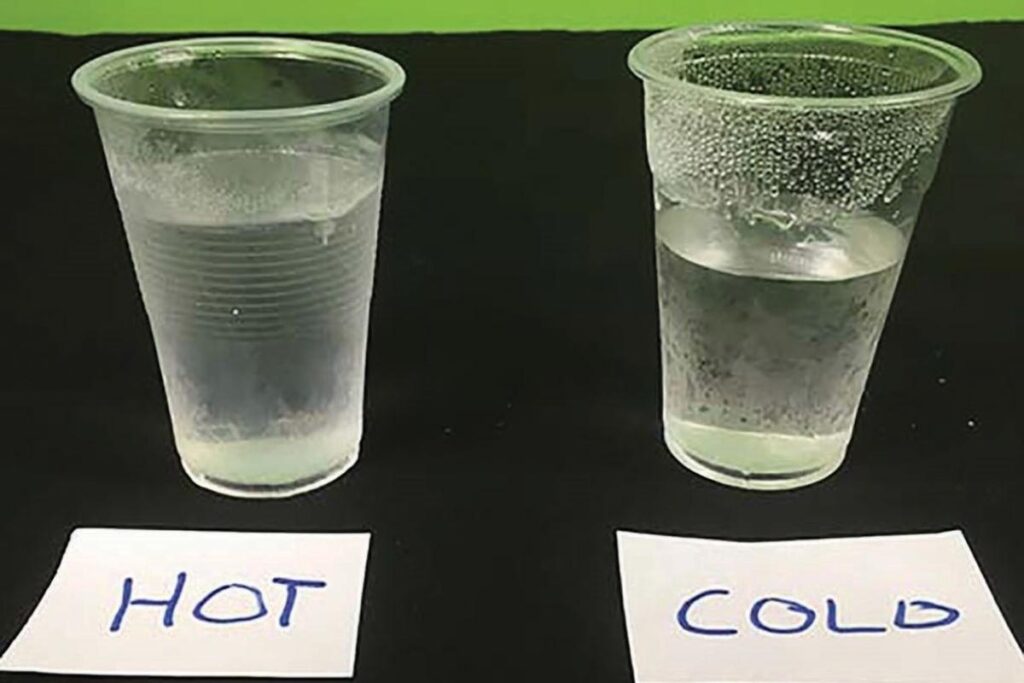
The Mpemba effect is a counterintuitive phenomenon where hot water can freeze faster than cold water under certain conditions. This effect was first observed by Tanzanian student Erasto Mpemba in 1963. While the exact reasons for this phenomenon are still debated, several factors, such as evaporation, convection currents, and the properties of water molecules, are thought to play a role.
One explanation suggests that as hot water cools, it loses mass due to evaporation, reducing the amount of water that needs to freeze. Additionally, the temperature gradient in hot water creates convection currents that enhance the cooling process. Understanding the Mpemba effect provides insights into the complex and sometimes surprising behavior of water.
27. Sharks Are Older Than Trees

Sharks have been swimming in the oceans for around 400 million years, making them older than trees, which appeared about 350 million years ago. This long evolutionary history has allowed sharks to develop a variety of adaptations that make them highly effective predators.
The fossil record shows that sharks have survived multiple mass extinctions, showcasing their resilience and adaptability. Their streamlined bodies, keen senses, and diverse reproductive strategies have enabled them to thrive in marine environments for hundreds of millions of years. The longevity of sharks highlights the dynamic nature of evolution and the survival of species over geological time scales.
28. The Eiffel Tower Can Be 15 cm Taller During the Summer

The Eiffel Tower, made of iron, undergoes thermal expansion in the heat of summer. As the temperature rises, the iron expands, causing the tower to grow by up to 15 centimeters (6 inches). Conversely, in the winter, the tower contracts and returns to its original height.
This expansion and contraction are due to the physical properties of iron, which expands when heated and contracts when cooled. The phenomenon is a clear example of how temperature affects the materials used in construction. Engineers account for these changes when designing structures to ensure their stability and longevity throughout the year.
29. There Are No Muscles in Your Fingers

Despite their dexterity and strength, fingers do not contain muscles. Instead, the muscles that control finger movements are located in the palm and forearm. These muscles are connected to the fingers by tendons, which transmit the force needed to move the fingers.
This anatomical arrangement allows for precise and powerful finger movements without the bulk of muscles in the fingers themselves. The tendons and muscles work together to perform complex tasks, from gripping objects to playing musical instruments. Understanding this system provides insight into the remarkable capabilities of the human hand.
30. Otters Hold Hands When They Sleep
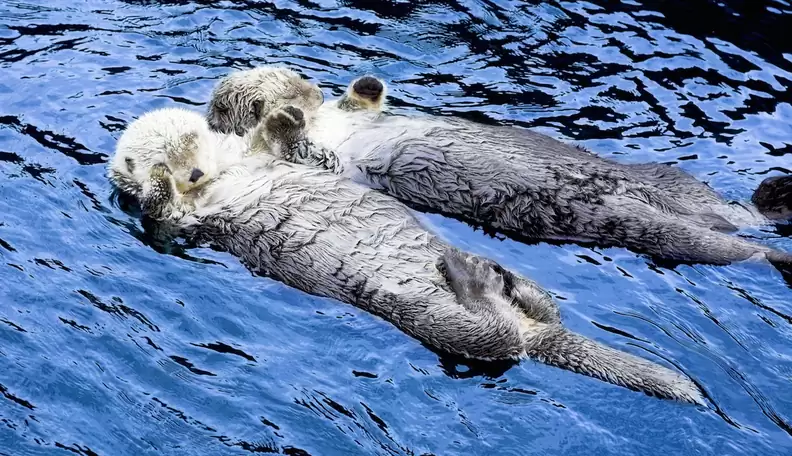
Sea otters exhibit a charming behavior known as “rafting,” where they hold hands while sleeping to prevent drifting apart. This behavior is a form of social bonding and ensures that groups of otters stay together in the water. Otters often use kelp to anchor themselves, creating a floating network of connected individuals.
Rafting provides safety in numbers, reducing the risk of predation and helping otters maintain social connections. This behavior also highlights the importance of social structures in animal communities and the ways in which animals adapt their behaviors to enhance survival and cohesion.
31. The Shortest War in History Lasted 38 Minutes

The Anglo-Zanzibar War of 1896 is the shortest recorded war in history, lasting only 38 minutes. The conflict occurred when Sultan Khalid bin Barghash of Zanzibar refused to step down after the death of the previous sultan. The British, who had interests in the region, issued an ultimatum for him to abdicate.
When the ultimatum expired, British forces bombarded the sultan’s palace, quickly overpowering his defenses. Sultan Khalid fled, and the war ended almost as soon as it began. This brief but decisive conflict illustrates the geopolitical tensions of the era and the swift military actions that characterized many colonial disputes.
32. Horses and Cows Sleep While Standing Up

Horses and cows have a unique ability to sleep while standing up, thanks to a specialized system of tendons and ligaments known as the stay apparatus. This system allows them to lock their legs in place, providing stability and support without using much muscle energy. This adaptation is particularly useful for grazing animals, as it enables them to remain vigilant for predators even while resting.
While they can doze off standing up, horses and cows need to lie down for deep sleep or REM sleep. Lying down allows them to relax their muscles fully and enter a restorative sleep phase. This combination of standing and lying down sleep patterns helps these animals balance the need for rest with the need for safety.
33. A Cockroach Can Live for Weeks Without Its Head
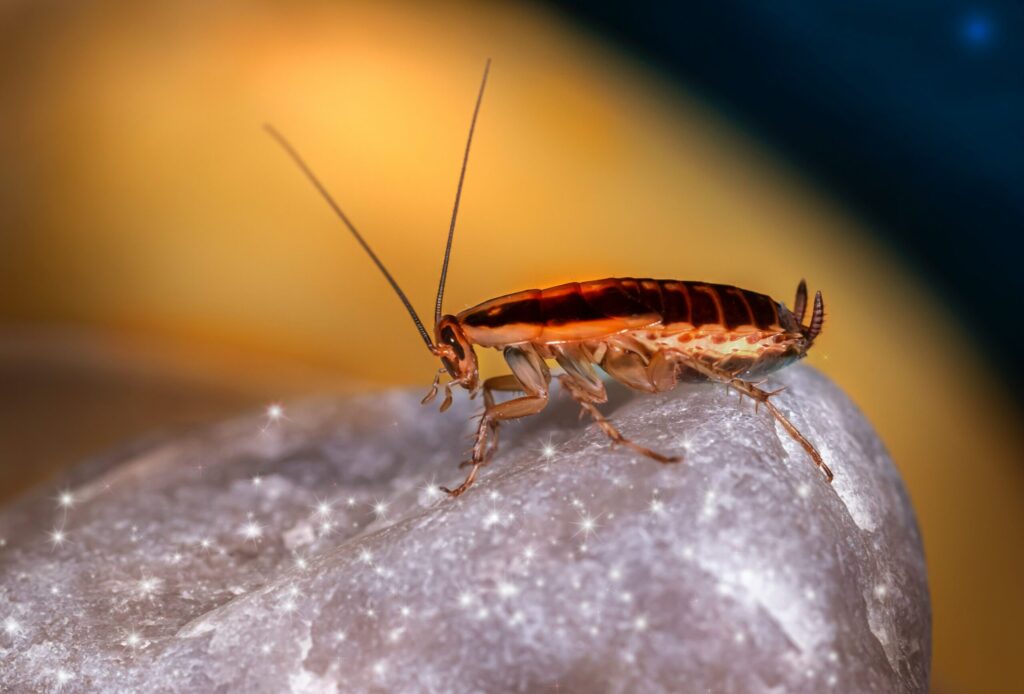
Cockroaches are incredibly resilient creatures capable of surviving for weeks without their heads. This ability is due to their simple circulatory system, which does not rely on a centralized heart or brain to pump blood. Instead, their open circulatory system allows blood to flow freely throughout their bodies.
Cockroaches also breathe through small openings in their bodies called spiracles, which are not dependent on the head. However, without a head, a cockroach eventually dies from dehydration or starvation. This remarkable survival skill underscores the hardiness of cockroaches and their ability to endure extreme conditions.
34. An Octopus Can Taste with Its Tentacles

Octopuses have specialized cells called chemoreceptors on their tentacles, allowing them to taste their environment. These chemoreceptors help octopuses detect and identify chemicals in the water, providing crucial information about potential prey and predators. By tasting their surroundings, octopuses can make informed decisions about where to move and what to eat.
This sensory adaptation is essential for octopuses, which rely on their keen senses to navigate and hunt in the often dark and murky waters of their habitats. The ability to taste with their tentacles adds another layer of sensory perception, enhancing their survival and success as predators in the ocean.
35. Pineapples Were Once So Expensive That People Rented Them

In the 18th century, pineapples were considered a symbol of wealth and status due to their rarity and high cost. Growing pineapples in Europe required specialized hothouses and careful cultivation, making them a luxury item accessible only to the very wealthy. As a result, pineapples were often rented for display at parties and social gatherings to impress guests.
The practice of renting pineapples highlights the lengths to which people would go to showcase their affluence. Today, pineapples are widely available and affordable, but their historical significance as a status symbol remains a fascinating example of how the value of goods can change over time.
36. Tigers Have Striped Skin, Not Just Striped Fur
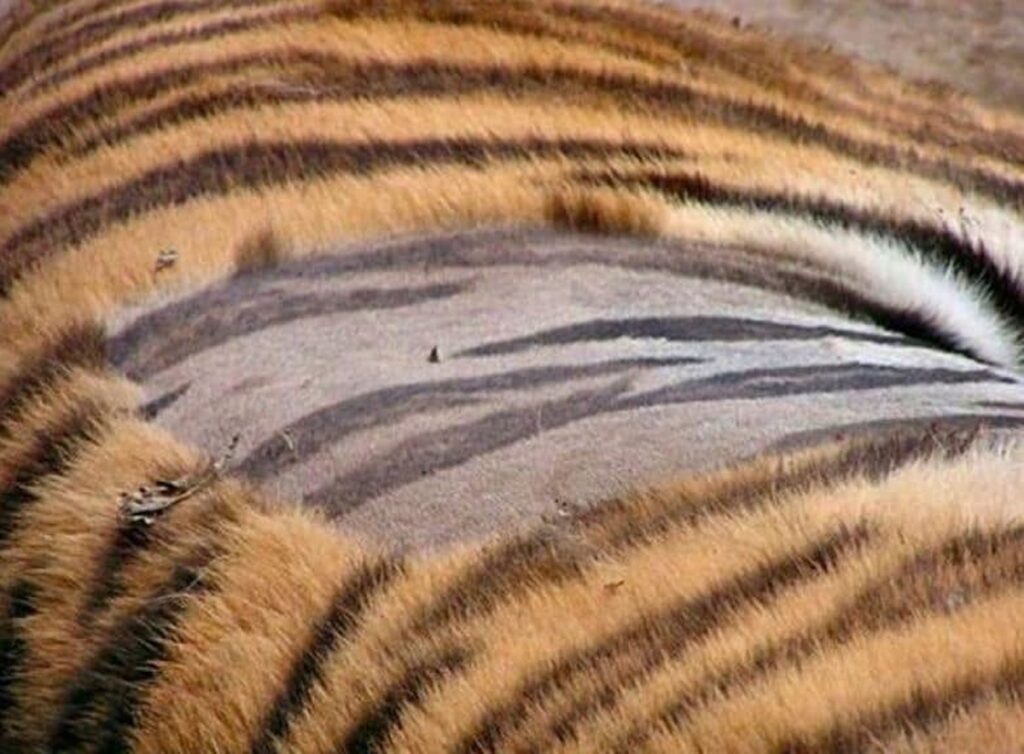
Tigers are known for their distinctive striped fur, but what many people don’t realize is that their skin is also striped. The pattern of stripes on a tiger’s fur is mirrored on its skin, providing camouflage in their natural habitats of forests and grasslands. Each tiger’s stripe pattern is unique, much like a human fingerprint, helping individuals to be identified.
These stripes serve as effective camouflage, breaking up the tiger’s outline and helping it blend into the surroundings when hunting or hiding. The stripes’ dual presence on both fur and skin highlights the evolutionary advantage of this adaptation, ensuring that tigers remain elusive and effective predators.
37. A Snowflake Can Take Up to 2 Hours to Fall to the Ground

The journey of a snowflake from cloud to ground can take up to two hours, depending on various factors such as temperature, air currents, and the size of the snowflake. Snowflakes form when water vapor in the atmosphere freezes into ice crystals, which then stick together to create the intricate patterns we recognize as snowflakes.
As snowflakes fall, they pass through different layers of the atmosphere, each with varying temperatures and humidity levels. These conditions influence the snowflake’s shape and size, making each one unique. The slow descent of snowflakes creates the serene and peaceful snowfall scenes we often associate with winter.
38. Humans Shed About 40 Pounds of Skin in Their Lifetime

The human body continuously renews its outer layer of skin, shedding old skin cells and replacing them with new ones. On average, a person sheds about 40 pounds (18 kilograms) of skin over their lifetime. This process helps to keep the skin healthy and protects the body from infections and environmental damage.
Dead skin cells are a major component of household dust. The continuous shedding and regeneration of skin cells are part of the body’s natural maintenance system, ensuring that the skin remains an effective barrier against external threats. This remarkable process highlights the dynamic nature of our body’s largest organ.
39. A Cloud Can Weigh Over a Million Pounds

Despite their fluffy appearance, clouds are incredibly heavy. A typical cumulus cloud, for example, can weigh over a million pounds. This weight comes from the water droplets or ice crystals that make up the cloud. The large volume of tiny droplets dispersed over a wide area gives clouds their light and airy look, but the combined mass is substantial.
The reason clouds can float despite their weight is due to the rising warm air that keeps them suspended in the atmosphere. This balance between gravity and buoyant forces allows clouds to drift across the sky, playing a crucial role in weather patterns and the water cycle.
40. Dolphins Have Names for Each Other
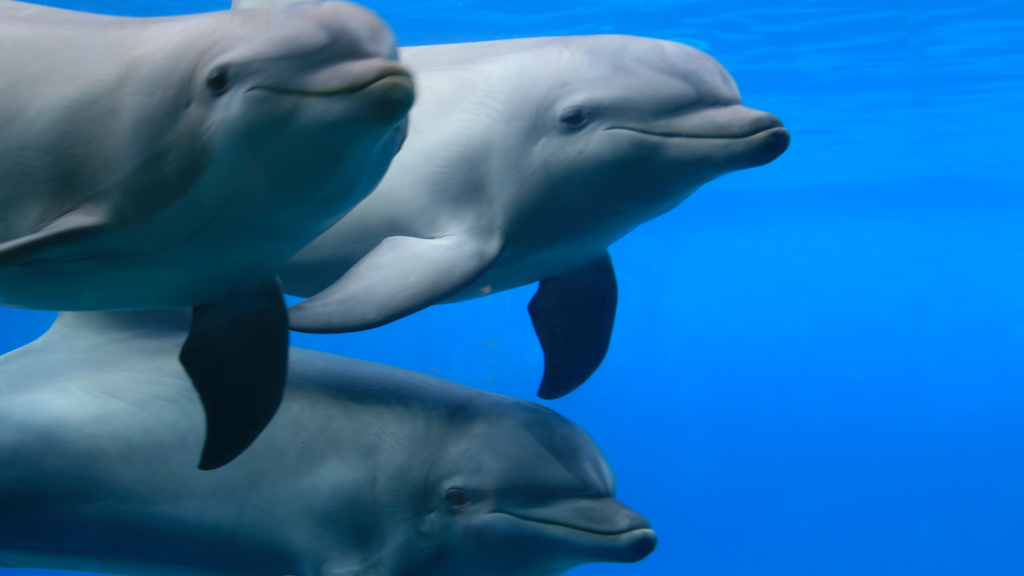
Dolphins are highly intelligent and social animals, and they use a complex system of vocalizations to communicate. Research has shown that dolphins develop unique whistles that function much like names. These signature whistles help dolphins identify and call to one another, maintaining social bonds within their pods.
This behavior indicates a high level of cognitive ability and social structure in dolphin communities. The use of individualized whistles allows dolphins to coordinate activities, establish social hierarchies, and strengthen group cohesion. Understanding dolphin communication provides insights into their complex social lives and enhances our appreciation of their intelligence.
